The Issue with Chronodynamics in Tenet
When I finished watching Tenet, I thought it all seemed to fit together like a nice jigsaw puzzle of time travel. So I decided to check my notes to start writing up an entry about it, and I realized it didn’t make any sense at all and the puzzle pieces didn’t fit together. I tried explaining it to my lovely wife, with the result being this haphazard whiteboard:
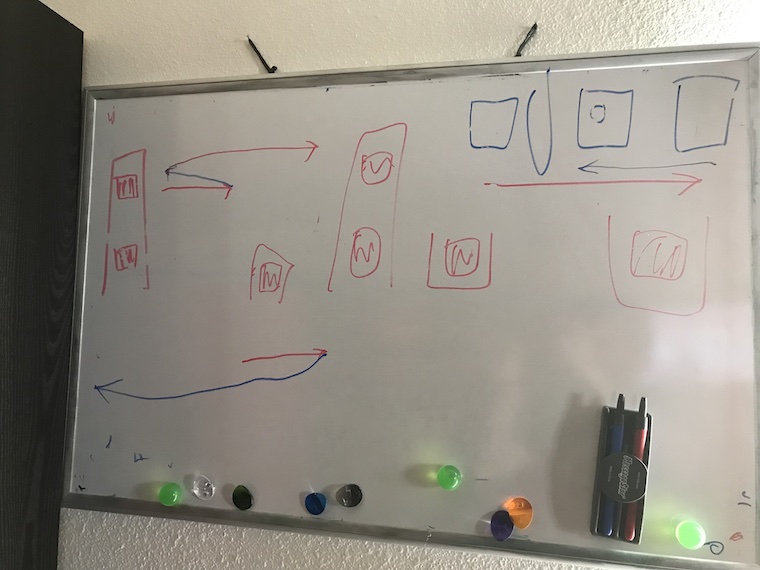
I don’t think our argument discussion got anywhere, but the point is that the way inverted and uninverted material interact is ultimately not logically consistent, though the cinematography may trick you into believing it is. This issue is persistent throughout the story, but nowhere is this more clear than with the double-exploding building (henceforth, the Building) during the final assault. You can watch this scene here, assuming the video is still active:
* Note: As is common in time travel discussions, I will be discussing acts of senseless violence and death rather frankly in this post.
Review of Tenet
Not like a critical review, more like a reminder review, in case you may have forgotten how Tenet works. Tenet operates as a Single Static Timeline–you can travel backward through time but you can’t change the past. There is a faction in the film that believes the past can be changed, but we see no evidence this is true so we will ignore it.
Objects can be inverted via some process, at which point, they travel backwards through time at a rate of 1 second per second; in order to go back in time one week, they have to be inverted for one week. Inverted objects interact with other inverted objects normally; if you were inverted and in a room filled with only inverted objects, you wouldn’t be able to tell you were inverted. Gravity affects inverted objects normally in their reference frame. If an inverted person jumps off a 10 story building and breaks their leg on the pavement, an uninverted person will see their broken leg heal itself, then the person will apparently fly up onto a 10 story building.
Further, inverted objects respond to things that happen in their past, the uninverted future. To the uninverted, it is retrocausality–the effect comes before the cause. The inverted and uninverted observers always see the same events occurring in the same order, it’s just that each sees the order reversed from the other.
Analysis
Now, onto just what happened with that Building. We have two teams: the uninverted Red team and the inverted Blue team. They both launch RPGs at the Building, detonating it both forward and backward in time right at the midpoint of the battle.
Red Team
From the perspective of Red team, the Building is already ruined to begin with, just a top laying on the ground:
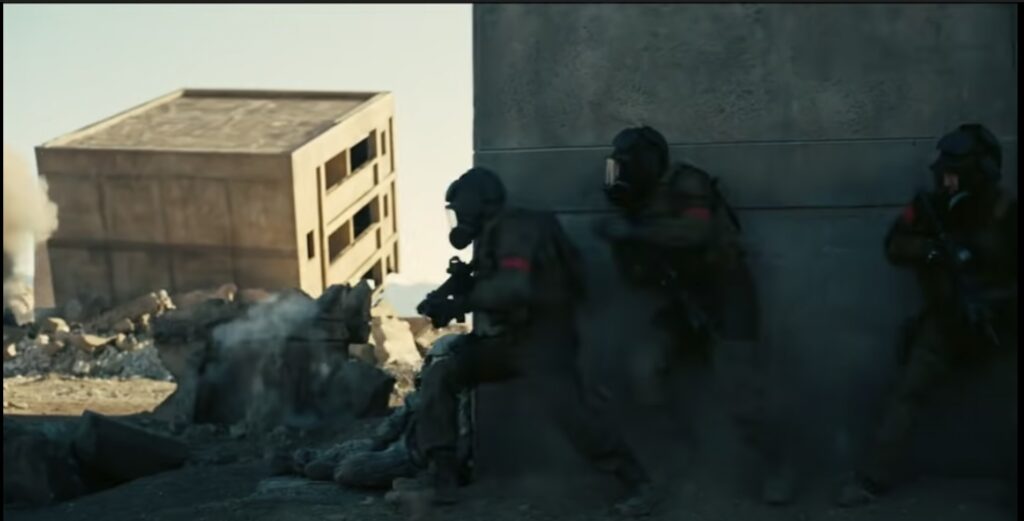
The Building eventually raises itself up, combining with nearby rubble to become a full building, as two RPGs are launched at it. An inverted RPG departs from the bottom half of the Building as the uninverted RPG hits the top:
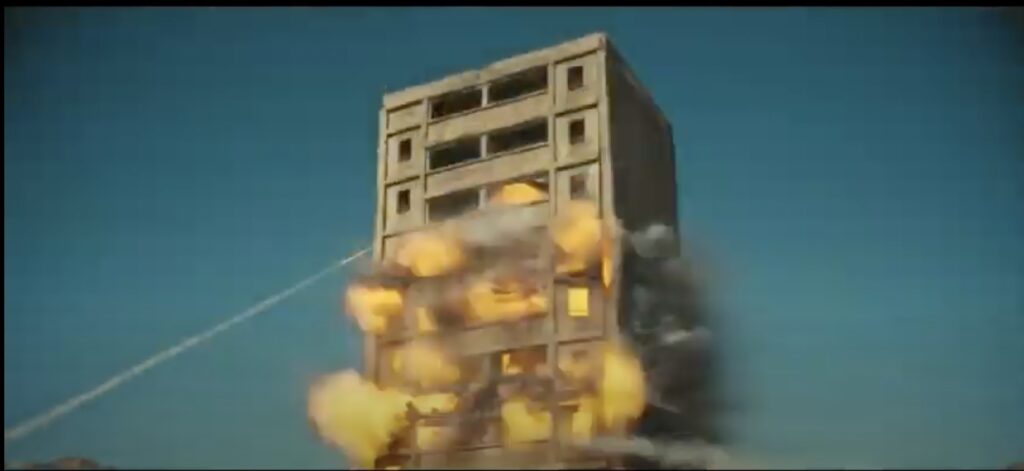
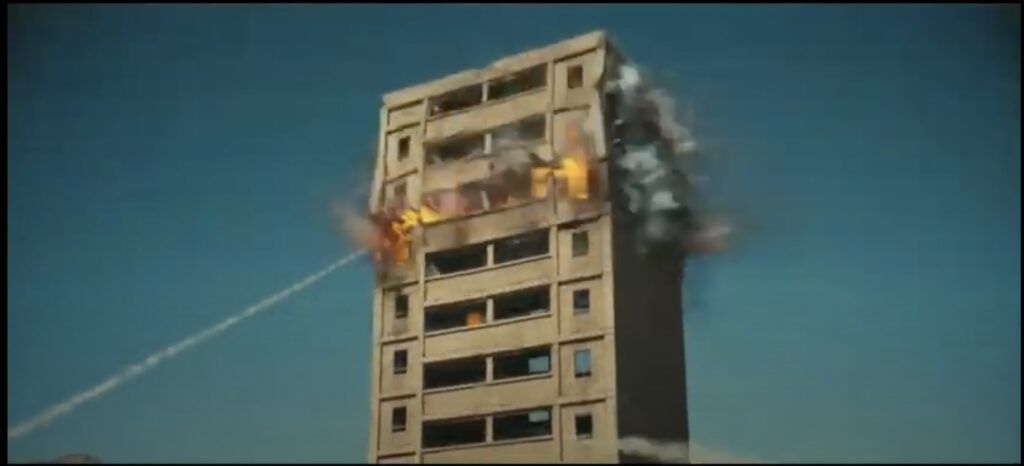
And from then on, the Building consists of only the bottom floors:
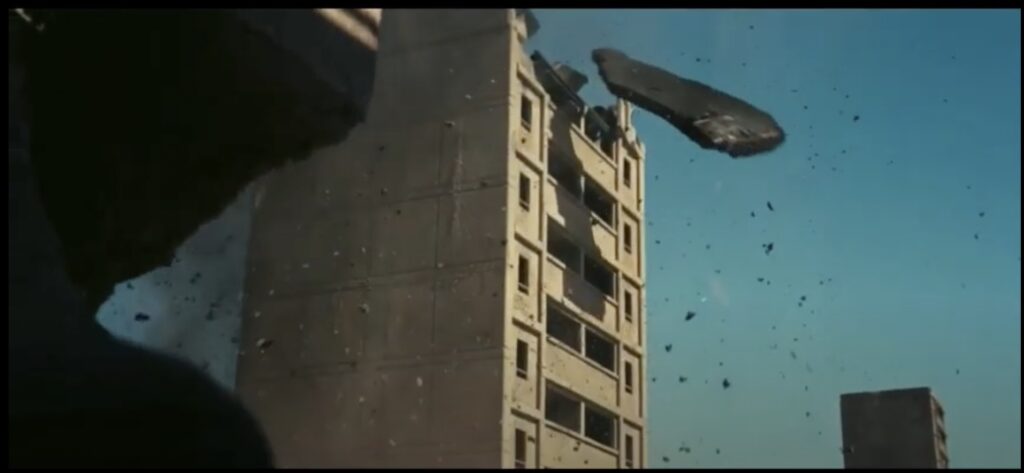
Blue Team
The Blue perspective is the opposite. The building begins its life as only a bottom:

The rubble around the Building flies up and arranges itself into the top half. An uninverted RPG departs from the top as their inverted one hits the bottom:


And it is forevermore just a top:

The issues
So, from a chronological standpoint, this event is perfectly self-consistent. The same events occur from both perspectives and are mutually reversed. We instead have an issue of causality, which can also be interpreted as an issue of objects not behaving consistently–they behave both inverted and uninverted without any delineation between the two behaviors.
So, we can explain the same issue with two different arguments–one regarding the forces on the Building, and one regarding causality.
Forces
We see throughout the film that uninverted objects are affected by forces normally and uninverted objects are affected by forces normally, at least in their own direction of time. When an inverted object interacts with an uninverted object, the results are a bit more complicated (push and pull get reversed, heat cools things, etc.), but we actually don’t need to worry about that for this discussion.
The point here is this: the Building and its rubble are uninverted, which means they follow the same physical rules as Red team. In other words, the rubble cannot spontaneously fly up into the air to reform the Building, because they are being held down by normal gravity.
We could argue that the reverse force of the explosion sucks in the adjacent materials to reform the building. If an inverted person punches an uninverted person, the uninverted person will feel like they’re being pulled by the inverted person, but this is only while they are in contact. At all other times, they are just subject to regular forces and momentum, so the explosive vacuum doesn’t explain how the Building’s material is affected by gravity. The material needs to fly into the air before it’s even in the blast radius. When it is midair, the only force acting on it is gravity, and gravity should be pulling it down, not up! It is not interacting with any inverted phenomena that can pull it up when it is flying.
It would be as if an uninverted person was laying dead on the ground then suddenly came back to life and flew up onto a tall building, only to find that an inverted person up there just pushed them off. Then the uninverted person is perfectly intact, even though they were just dead and flying.
I feel I should also point out that light has speed to it. The inverted shouldn’t be able to see uninverted things normally because the light is returning to the uninverted objects, but that’s its own whole issue.
Causation
More abstract but more complete we have the issue of causation. As in, why did the Building reform? Let’s take a look at the Building’s timeline, according to both Red and Blue:
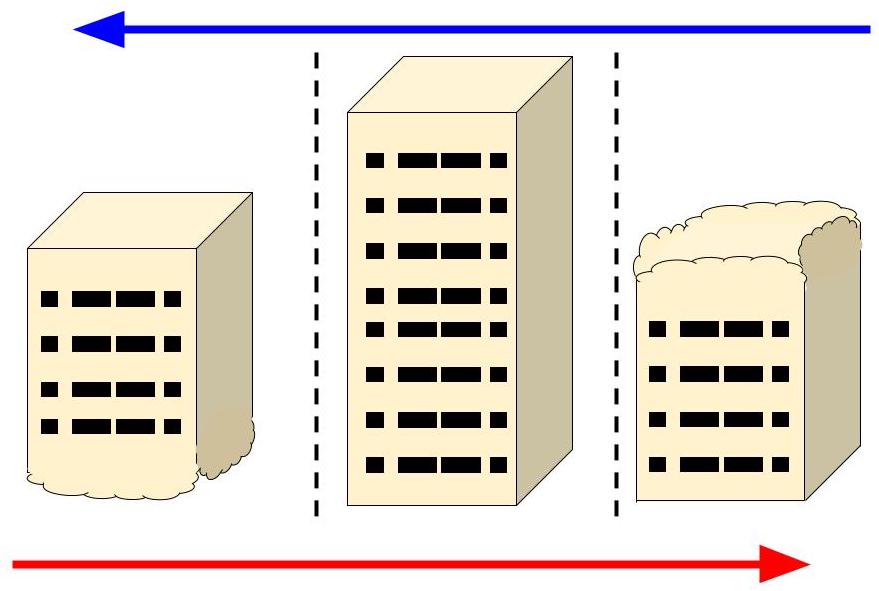
There is something very important that is missing from this timeline–namely, how was the building built? There should be a point earlier in the timeline like this:
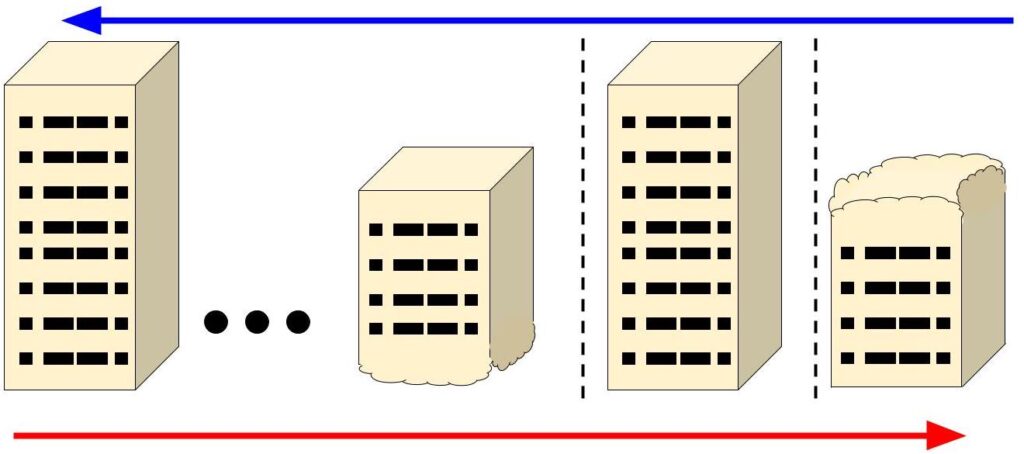
(This is a cleaner version of what I had drawn on the whiteboard in the first picture)
After all, the architect didn’t design the building to just be a top half. That means that at some point, what, the building spontaneously collapsed in exactly an explosion pattern? As far as we can tell, the building has no reason to rebuild itself mid-battle. There’s no point in the future where it is a complete building, and we cannot even tell for certain there was a point in the past where it was complete, so why did it reconstruct itself into that particular form? The pair of screenshots above of the RPGs hitting are adjacent frames–the Building doesn’t actually spend any length of time as a complete building!
We have a similar problem with the windows in the Freeport airport fight. When our protagonists walk into the room, the window already has bullet holes in it. Later, an inverted man1 shoots the windows with an inverted gun, and the holes heal up, so the window is then intact. So we once again have a timeline like this:

(This is a cleaner version of the stuff in the top-right of the whiteboard photo)
Unlike with the building, the window isn’t destroyed twice, as far as we are aware. However, we still have the case that the window is installed, then spontaneously forms holes, which are then unformed. We have another uninverted object being subject to retrocausality.
Our understanding of causality is that objects should only react to events in their past, so only inverted things are affected by retrocausality, because to inverted objects, the future is their past.
Of course, many would say that causality doesn’t play into time travel stories, but that’s a rather lazy conclusion. In any consistent time travel story, cause and effect do exist. Sometimes they are reversed (as in retrocausality), and sometimes they loop back around so that something ultimately causes itself, but there are still paths of causation that can be followed. And of course, the only alternative is that things happen for no reason, which is just not good storytelling.
We could probably conceive of a way for retrocausality from inverted objects to affect uninverted objects, so that we could have events like the building rubble rising back up, but as portrayed in the movie, the effects are just too inconsistent.
I originally planned to do an analysis of each of the major setpieces (the airport, the car chase, and the battle), but then I was like, meh. Instead, you just get this complaint piece. You’re welcome. Anyways, if the obsessive minutiae of time travel interests you, sign up for my mailing list for alerts when there are new blog posts and for updates on The Chronoversal Compendium!
Footnotes:
1. Yes, I know his identity, but it’s not important
